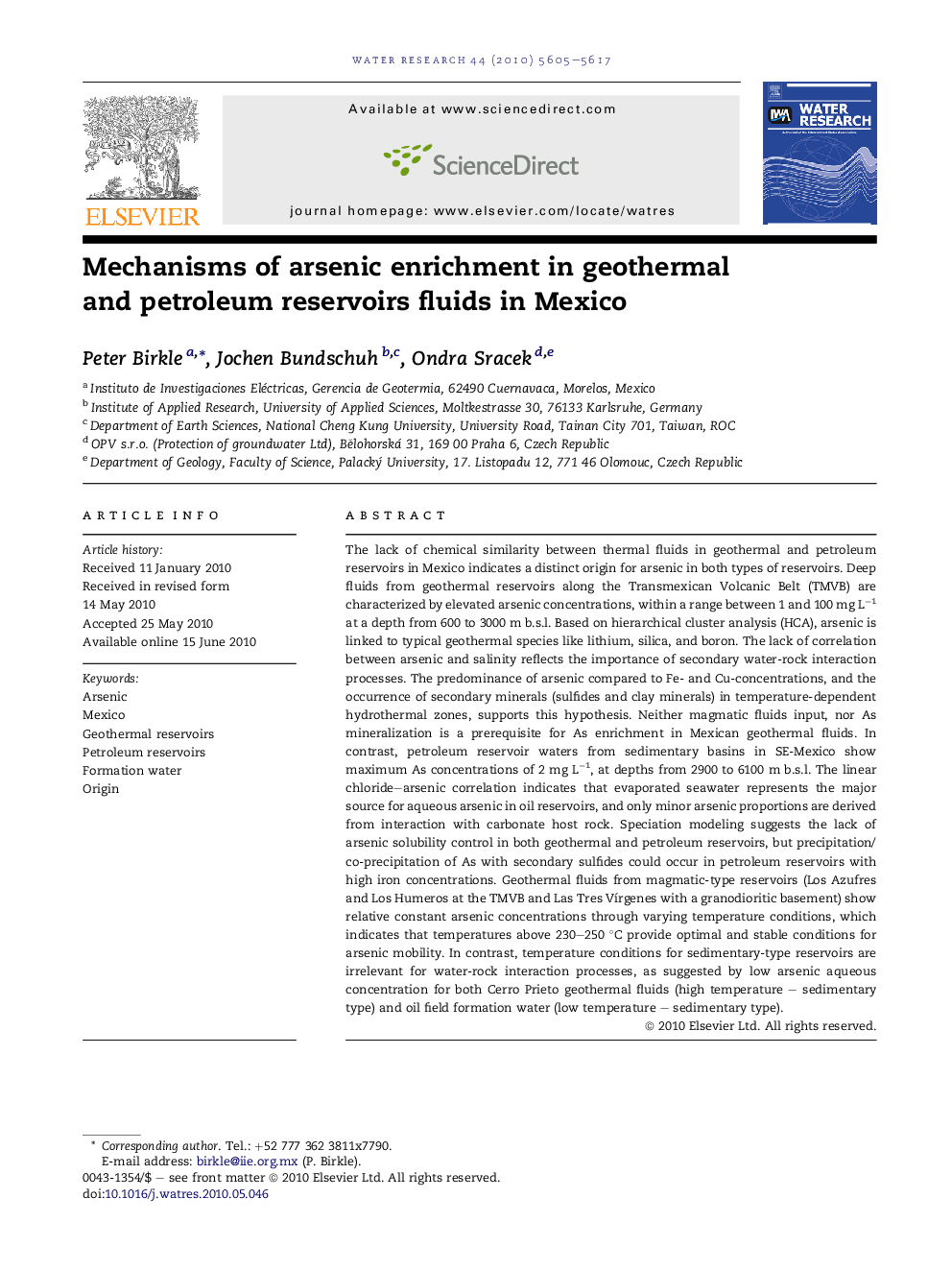| کد مقاله | کد نشریه | سال انتشار | مقاله انگلیسی | نسخه تمام متن |
|---|---|---|---|---|
| 4484552 | 1316925 | 2010 | 13 صفحه PDF | دانلود رایگان |

The lack of chemical similarity between thermal fluids in geothermal and petroleum reservoirs in Mexico indicates a distinct origin for arsenic in both types of reservoirs. Deep fluids from geothermal reservoirs along the Transmexican Volcanic Belt (TMVB) are characterized by elevated arsenic concentrations, within a range between 1 and 100 mg L−1 at a depth from 600 to 3000 m b.s.l. Based on hierarchical cluster analysis (HCA), arsenic is linked to typical geothermal species like lithium, silica, and boron. The lack of correlation between arsenic and salinity reflects the importance of secondary water-rock interaction processes. The predominance of arsenic compared to Fe- and Cu-concentrations, and the occurrence of secondary minerals (sulfides and clay minerals) in temperature-dependent hydrothermal zones, supports this hypothesis. Neither magmatic fluids input, nor As mineralization is a prerequisite for As enrichment in Mexican geothermal fluids. In contrast, petroleum reservoir waters from sedimentary basins in SE-Mexico show maximum As concentrations of 2 mg L−1, at depths from 2900 to 6100 m b.s.l. The linear chloride–arsenic correlation indicates that evaporated seawater represents the major source for aqueous arsenic in oil reservoirs, and only minor arsenic proportions are derived from interaction with carbonate host rock. Speciation modeling suggests the lack of arsenic solubility control in both geothermal and petroleum reservoirs, but precipitation/co-precipitation of As with secondary sulfides could occur in petroleum reservoirs with high iron concentrations. Geothermal fluids from magmatic-type reservoirs (Los Azufres and Los Humeros at the TMVB and Las Tres Vírgenes with a granodioritic basement) show relative constant arsenic concentrations through varying temperature conditions, which indicates that temperatures above 230–250 °C provide optimal and stable conditions for arsenic mobility. In contrast, temperature conditions for sedimentary-type reservoirs are irrelevant for water-rock interaction processes, as suggested by low arsenic aqueous concentration for both Cerro Prieto geothermal fluids (high temperature – sedimentary type) and oil field formation water (low temperature – sedimentary type).
Journal: Water Research - Volume 44, Issue 19, November 2010, Pages 5605–5617